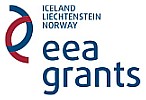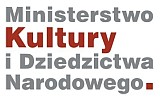Polish and Norwegian maritime heritage
“Polish and Norwegian maritime heritage. The exchange of experiences and good practices. The project preservation and promotion of tangible and intangible cultural heritage associated with the local boatbuilding” has ended.
The project was conducted from autumn 2013 by the National Maritime Museum in Gdańsk with Hardanger & Voss Museum in Utne and the Norwegian Directorate for Cultural Heritage (Riksantikvaren) in Oslo. As part of the programme, Museum employees took part in training courses in the Norwegian shipyard in Norheimsund, during which they discovered traditional boatbuilding methods, rope-work techniques and the basics of how to maintain small wooden boats. The National Maritime Museum has devised an educational programme which will be implemented in both countries. In August the staff of the National Maritime Museum and Hardanger Fartovernsenter went to promote the project during the “Hanse Sail” festival in Rostock.
At the end of September, we hosted our Norwegian partners at the Vistula Lagoon Museum. Tina Kierland, a rope-worker, and Peter Helland-Hansen, a boatbuilder, took part in the press conference that rounded off the project and went to Kąty Rybackie to teach children from the primary school in Sztutowo traditional rope-work techniques and boatbuilding methods along with employees of the National Maritime Museum.
“We twisted ropes on the ropewalk and constructed sheathing for a wooden boat”, says Robert Domżał PhD, the head of the History of Shipbuilding Department, managing the “Norwegian project”. “In Norway great attention is paid to the traditional crafts which have shaped generations. Together with the staff of Hardanger Fartovernsenter, we wanted to show children the historical importance of the craft practiced by their fathers, grandfathers and great-grandfathers”.
This autumn the Education Department of the National Maritime Museum will conduct classes on the subject of maritime craft dedicated to children and young people with disabilities.
“Polish and Norwegian maritime heritage. The exchange of experiences and good practices. The project preservation and promotion of tangible and intangible cultural heritage associated with the local boatbuilding” within the framework of the “Promotion of Diversity in Culture and Arts within European Cultural Heritage” programme co-financed by the European Economic Area Financial Mechanism 2009-2014. 90% financed by the European Economic Area and 10% by the Ministry of Culture and National Heritage.
 |
 |
 |

